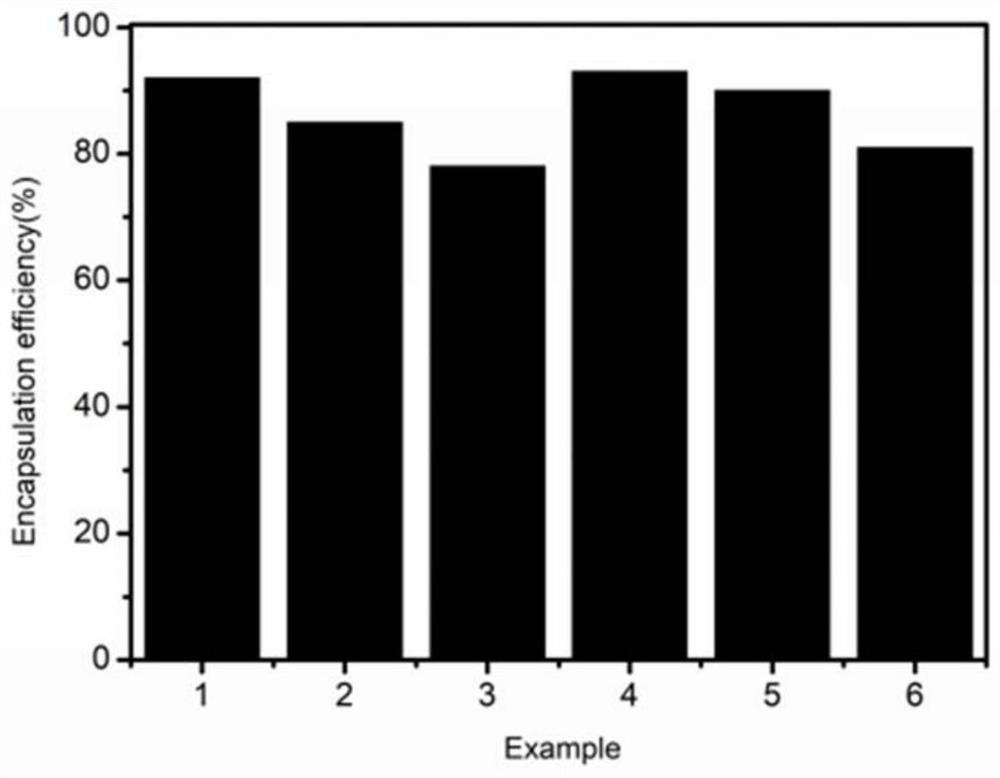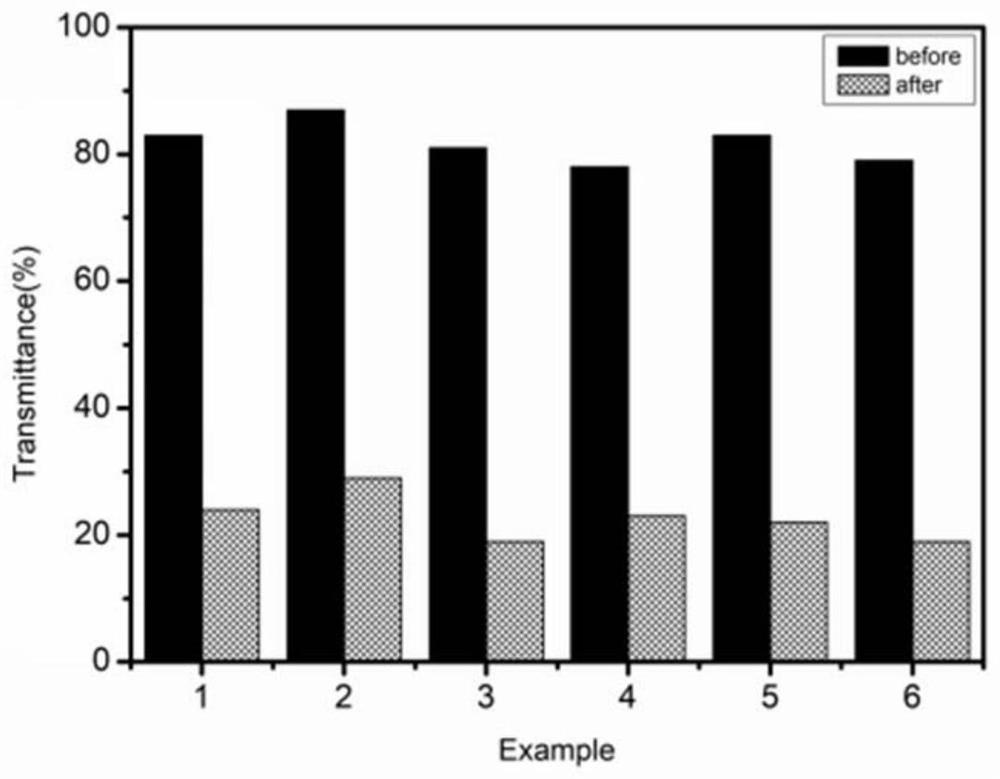Method for Synthesizing Environmentally Responsive Polymers by Copolymerization Modification of Alkenyl Sulfonate Monomers
A technology of alkenyl sulfonate and copolymerization modification, which is applied in the specific preparation field of hydrogel composite assembly to synthesize environment-responsive polymers, achieving the effects of less side reactions, high grafting rate, and high efficacy
- Summary
- Abstract
- Description
- Claims
- Application Information
AI Technical Summary
Problems solved by technology
Method used
Image
Examples
Embodiment 1
[0032] First, 30g of styrene and 90g of dimethyl sulfoxide were added to the reactor, stirred and heated to 70°C, filled with nitrogen for 3 times and deoxygenated for 30 minutes, then sealed, added 5.19g of isopropanol, and then added 79.05g mass fraction It is a nitric acid solution of 20% ceric ammonium nitrate, after stirring for 12 minutes, add 24.23g of 70% gluconic acid aqueous solution, after constant temperature reaction for 2 hours, cool to 20°C, add 50% sodium hydroxide solution Neutralize until the pH is 7, remove the solvent by distillation under reduced pressure, and then add 9g of an aqueous solution of 10% sodium lauryl sulfate to obtain a polymer emulsion; 40g of 2-acrylamide-2-methylbenzene Sulfonic acid, 9.76g of N-methylolacrylamide and 14.93g of deionized water were added to the reactor, stirred and heated to 60°C, purged with nitrogen for 10 minutes, and 20g of potassium persulfate with a mass fraction of 5% was added Stir the aqueous solution for 15 minu...
Embodiment 2
[0034] First, add 30g of phenylisopropene and 240g of 1,4-dioxane into the reactor, stir and raise the temperature to 60°C, fill with nitrogen for 5 times and remove oxygen for 10 minutes, then seal it, add 5.14g of n-dodecyl Mercaptan, then add 5.93g mass fraction of 30% cerium ammonium nitrate nitric acid solution, after stirring for 8 minutes, add 55.42g mass fraction of 50% sodium gluconate aqueous solution, after constant temperature reaction for 5 hours, cool to 35 ° C, add The potassium hydroxide solution with a mass fraction of 20% was neutralized to a pH of 8, the solvent was removed by distillation under reduced pressure, and then 6 g of an aqueous solution of sodium dodecylbenzenesulfonate with a mass fraction of 25% was added to obtain a polymer emulsion; Add 40g of sodium p-styrene sulfonate, 2.8g of acrylic acid and 34.24g of deionized water into the reactor, stir and heat up to 50°C, blow nitrogen for 20 minutes, and add 17.1g of 20% persulfuric acid Stir the so...
Embodiment 3
[0036] First, 30g of vinyltoluene and 150g of dimethylformamide were added to the reactor, stirred and heated to 80°C, filled with nitrogen gas for 4 times to remove oxygen and then sealed for 20 minutes, then added 27.71g of isooctyl 3-mercaptopropionate, Then add 6.98g mass fraction of 20% cerium ammonium nitrate nitric acid solution, stir for 5 minutes and add 104.1g mass fraction of 40% gluconic acid aqueous solution, after constant temperature reaction for 6 hours, cool to 40°C, add 30% mass fraction % ethylenediamine solution to be neutralized to a pH of 6, the solvent is removed by distillation under reduced pressure, and then 12g of a mass fraction of 20% sodium stearate is added to obtain a polymer emulsion; 40g of vinylsulfonic acid, 9.56 Add 6.2 g of methacrylic acid and 29.74 g of deionized water into the reactor, stir and heat up to 80 ° C, blow nitrogen for 15 minutes, add 6.2 g of 40% ammonium persulfate aqueous solution and stir for 5 minutes, then add 0.99g N,...
PUM
| Property | Measurement | Unit |
|---|---|---|
| quality score | aaaaa | aaaaa |
| quality score | aaaaa | aaaaa |
| quality score | aaaaa | aaaaa |
Abstract
Description
Claims
Application Information
 Login to View More
Login to View More - R&D
- Intellectual Property
- Life Sciences
- Materials
- Tech Scout
- Unparalleled Data Quality
- Higher Quality Content
- 60% Fewer Hallucinations
Browse by: Latest US Patents, China's latest patents, Technical Efficacy Thesaurus, Application Domain, Technology Topic, Popular Technical Reports.
© 2025 PatSnap. All rights reserved.Legal|Privacy policy|Modern Slavery Act Transparency Statement|Sitemap|About US| Contact US: help@patsnap.com



